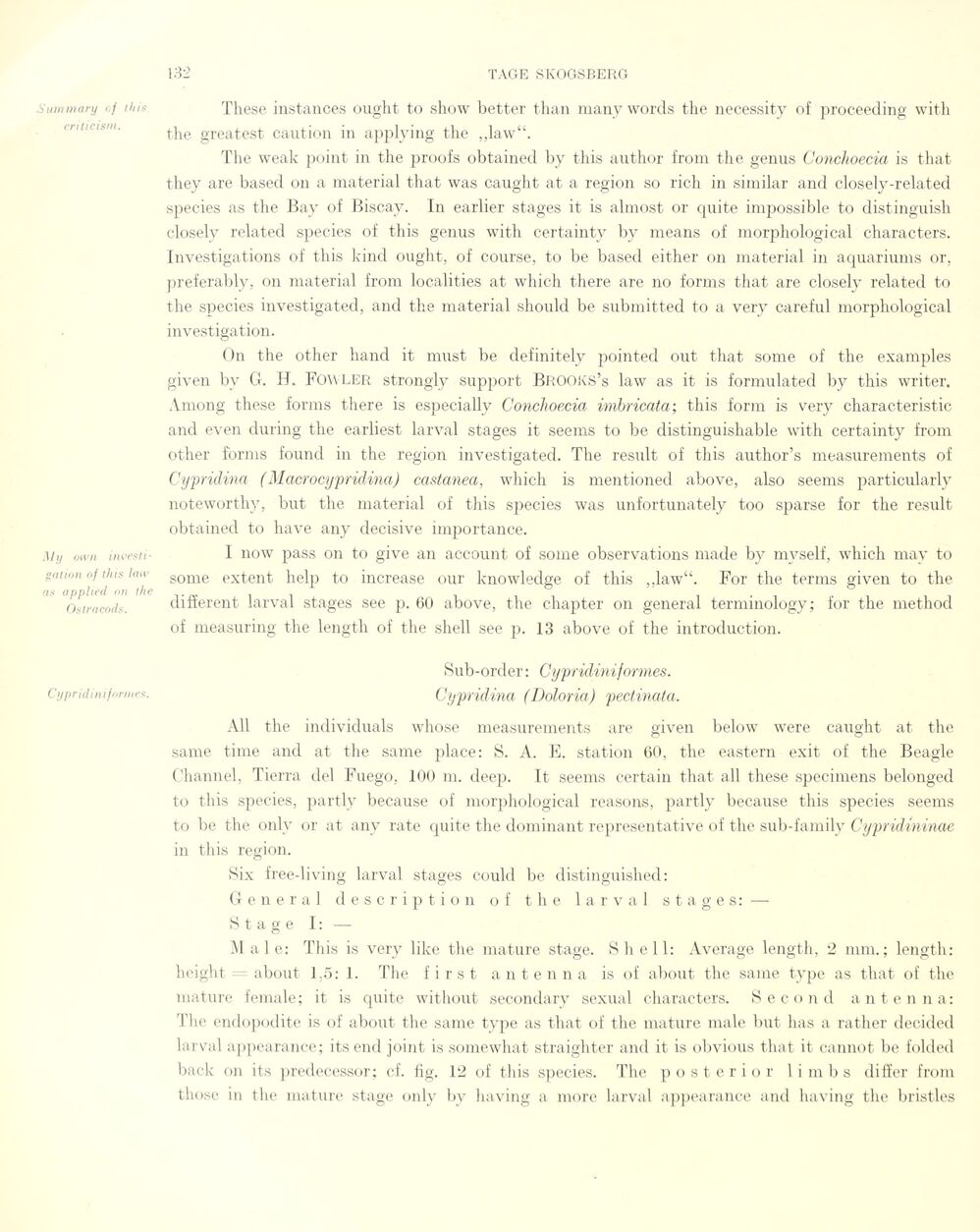
Full resolution (JPEG) - On this page / på denna sida - Sidor ...

<< prev. page << föreg. sida << >> nästa sida >> next page >>
Below is the raw OCR text
from the above scanned image.
Do you see an error? Proofread the page now!
Här nedan syns maskintolkade texten från faksimilbilden ovan.
Ser du något fel? Korrekturläs sidan nu!
This page has never been proofread. / Denna sida har aldrig korrekturlästs.
S um mary of this
criticism.
My own
investigation of this latv
as applied on the
Ostracods.
Cypridiniformes.
These instances ought to show better than many words the necessity of proceeding with
the greatest caution in applying the „law“.
The weak point in the proofs obtained by this author from the genus Conchoecia is that
they are based on a material that was caught at a region so rich in similar and closely-related
species as the Bay of Biscay. In earlier stages it is almost or cpiite impossible to distinguish
closely related species of this genus with certainty by means of morphologica! characters.
Investigations of this kind ought, of course, to be based either on material in aquariums or,
preferably, on material from localities at which there are no forms that are closely related to
the species investigated, and the material should be submitted to a very careful morphologica!
investigation.
On the other hand it must be definitely pointed out that some of the examples
given by O. H. FOWLER strongly support Bhooks’s law as it is formulated by this writer.
Among these forms there is especially Conchoecia imbricata; this form is very characteristic
and even during the earliest larval stages it seems to be distinguishable with certainty from
other forms found in the region investigated. The result of this author’s measurements of
Cypridina (Macrocypridina) castanea, which is mentioned above, also seems particularly
noteworthy, but the material of this species was unfortunately too sparse for the result
obtained to have any decisive importance.
I now pass on to give an account of some observations made by myself, which may to
some extent help to increase our knowledge of this ,,law“. For the terms given to the
different larval stages see p. 60 above, the chapter on general terminology; for the method
of measuring the length of the shell see p. 13 above of the introduction.
Sub-order : Cypridini]ormes.
Cypridina (Doloria) pectinata.
All the individuals whose measurements are given below were caught at the
same time and at the same place: S. A. E. station 60, the eastern exit of the Beagle
Channel, Tierra del Fuego, 100 m. deep. It seems certain that all these specimens belonged
to this species, partly because of morphological reasons, partly because this species seems
to be the onlv or at any rate quite the dominant representative of the sub-family Cypridininae
in this region.
Six free-living larval stages could be distinguished:
General description o f the larval stages:-—-
Stage I : —
Male: This is very like the mature stage. Shell: Average length, 2 mm.; length:
height = about 1,5: 1. The first antenna is of about the same type as that of the
mature female; it is quite without secondary sexual characters. Second antenna:
The endopodite is of about the same type as that of the mature male but has a rather decided
larval appearance; its end joint is somewhat straighter and it is obvious that it cannot be folded
back on its predecessor; cf. fig. 12 of this species. The posterior li mb s differ from
those in the mature stage only by having a more larval appearance and having the bristles
<< prev. page << föreg. sida << >> nästa sida >> next page >>